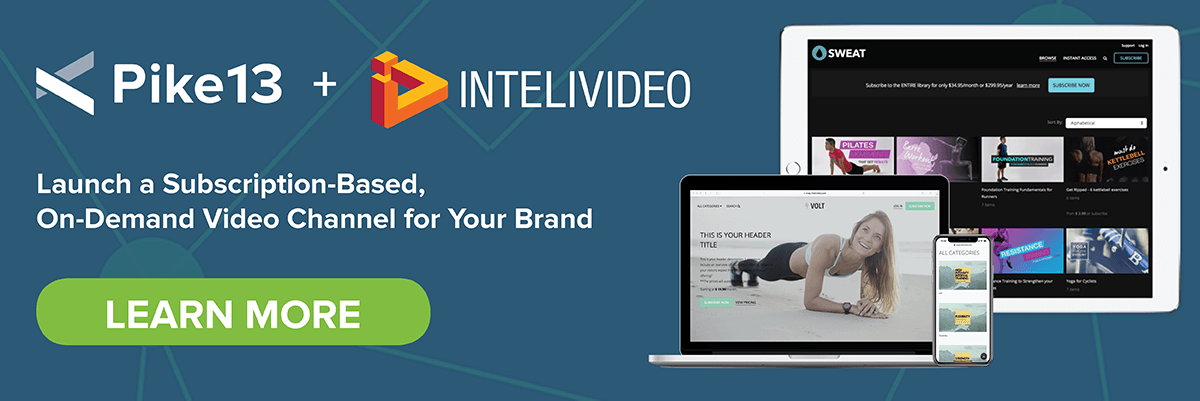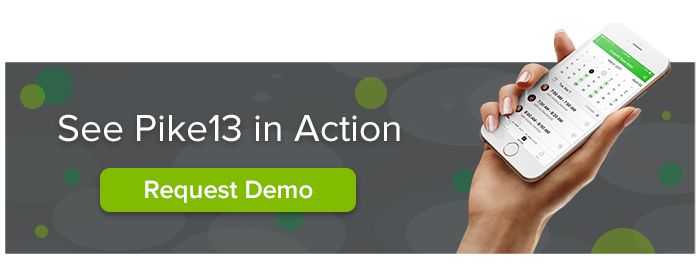Prior to the outbreak of COVID-19, in-studio workouts and at-home workouts were considered separate areas of the fitness industry. But since social distancing has become the standard in public health, the two areas have merged together to form a new, hybrid model of class.
The question is: what happens when the COVID threat is gone? Is virtual instruction here to stay? Many business owners worry that virtual content could ultimately render brick and mortar locations obsolete, but it probably won’t. Some clients may prefer online classes, but most come to your studio for the socialization and sense of community in addition to the class, and virtual instruction can never replace that.
One thing is clear: the future of class instruction has been drastically altered by the coronavirus. And more likely than not, the hybrid class model is the new normal for boutique studios.
What We Mean by “Hybrid Class Model”
Eventually, when the coronavirus pandemic is under control and businesses can safely increase capacity in their facilities, business owners will have to decide whether to continue offering virtual services or return to an entirely in-studio class structure. The hybrid class model is the third option, combining in-studio classes and remote instruction.
On-Demand Videos
On-demand allows clients to engage with your content whenever and wherever they want to. This is appealing to clients who have hectic schedules, travel frequently, or just prefer taking classes outside of your normal business hours.
The accessibility of on-demand removes a huge barrier for clients who have unpredictable schedules. They can pay to access your content whenever it’s convenient for them. You might even find yourself with new, non-local clients who enjoy your classes.
Most importantly, subscription-based access to this content can bring in additional revenue to your studio without requiring much maintenance after the initial production efforts. Not only will clients engage with your content at home, but local clients may sign up for an in-studio class if they enjoy the online ones.

Livestreamed Classes
Many studios have experimented with livestreaming over the past months. As both the business and clients get used to remote instruction, owners are realizing that there is potential revenue in livestreamed classes long after COVID is gone.
Remote instructors broadcasting a class to remote clients has been the norm for months now. We’ll continue seeing this class model for the foreseeable future until studios can safely reopen and stay open. There are important, immediate benefits to this:
- Keep your staff and clients safe
- Fill your classes with paying clients
- Keep clients who don’t yet feel comfortable coming into the studio (or can’t because of capacity limits) engaged
And even after studios fully reopen, a livestream enrollment option can bring in additional revenue while boosting client engagement and retention.
Planning for an Uncertain Future
The reason it’s so hard to make business decisions right now is that we don’t know what’s going to happen in the next weeks or months. Currently we’re seeing another wave of shutdowns across the U.S. as COVID cases spike again. Realistically, we could be seeing waves of shutdowns and reopenings for months.
Studio owners all over the world are grappling with this as they modify their business models to adapt to the new normal. The best thing right now is to plan for uncertainty and assume that facility capacity will continue to be limited. For the foreseeable future, the highest revenue potential lies in virtual services.

Which is Better: On-Demand or Livestream?
The right combination of in-person, livestream and on-demand will be unique to your business. It depends on your type of business, your staff, your instruction style, and how much time and money you have to invest in virtual content.
But when it comes to virtual services, there are few general best practices that can apply to any type of membership- or class-based business.
Short-Term: Livestreaming
The past few months have proven that livestreaming can work and that clients are satisfied attending these classes while the pandemic keeps studios closed.
Livestreaming is a great option for the immediate short-term because it’s relatively easy. The instruction may be a modified version of the in-person class, taking into account safety and props that a client may or may not have at home.
How studios manage livestream classes varies. Some owners have their instructors teach from their own homes. Others are setting up the livestream from the studio, but with only the instructors there practicing social distancing.

Client’s may not mind a low production value for livestream classes now (many instructors are making do with just a smartphone) because they know how quick and difficult this transition has been, but you’ll want to invest a bit more into equipment if you plan to continue offering livestream classes long-term. It doesn’t have to be an extravagant setup, but a few lights and a good camera can go a long way. Ideally, you can set up the lights in an area of your studio specifically re-designed for livestreaming.
Mid-Term: In-Studio + Livestreaming
Studios are reopening in phases, and for safety reasons in-studio classes are capped at just a few people. A livestream option helps you bypass the limits and fill those classes to capacity with paying clients. “Overflow” clients, as well as clients who aren’t comfortable coming into the studio yet, can join the class from home.
If you find yourself in a position where more clients want to attend in-studio classes than you can safely allow, you’ll need a process to determine who can come to the studio. Every studio operates a little differently, but here are a few ways you might manage it:
- First come, First Served: The first 5 clients to enroll in the class may come to the studio, everyone else must join virtually
- Priority by Membership Type: Offer the in-studio spots to your members over single plan holders and drop-ins
- Lottery System: If more people request in-person spots than you can allow, draw names randomly 24 hours before the class start time
You can also place restrictions on enrollment, such as not allowing a client to sign up for more than one in-studio spot per week, or limiting how many waitlists someone can join. Whatever your policy is, just make sure you communicate it clearly to your clients so they know what to expect.
Even after capacity restrictions end, the in-studio + livestreaming class model can continue to bring in extra revenue. The livestream option won’t just attract more people, it allows you to enroll unlimited virtual clients in the class.
Long-Term: On-Demand
In the long-term, on-demand videos are a more stable investment for your business. After the initial production efforts, on-demand videos don’t need regular maintenance. It’s an extra source of revenue that doesn’t rely on the availability of staff or need to be worked into your studio’s schedule.
The reason on-demand video is suggested as a longer-term goal is because you should take the time you need to create the best content possible. Unlike livestreams, which are generally understood to be more casual, clients expect paid, on-demand videos to look professionally produced. So when it comes to on-demand video, investing more up front leads to greater revenue overall.
When you have several videos ready to go, offer it as a subscription-based service to your clients. You may consider having one or two videos available for free in order to give prospective clients a taste of your business.

What Tools and Assets Support a Hybrid Class Model?
Some equipment was already mentioned–lights and a camera–but what else do you need to effectively manage a schedule of virtual classes? Here a few things to think about:
- Instructors who are comfortable with and effective at teaching on camera. Not everyone has this skill, and that’s ok. Learn which of your instructors thrive on camera and which are more effective in-person.
- A marketing plan that is specific to your virtual services. It’s important to continue engaging with virtual-only clients after in-studio classes resume. Keep in mind that a client will not enroll in an online class for the same reason they take an in-studio class.
- Scheduling software that supports a virtual streaming solution. Pike13 integrates with Intelivideo and various streaming platforms via Zapier to support both livestreaming and on-demand videos.
Pike13 is committed to supporting our customers as they adapt their business models to support virtual class offerings. That’s why we’ve adapted our software specifically to make going virtual easier. Request a Demo of Pike13 to see how our platform can support your business now and in the future as you grow.
